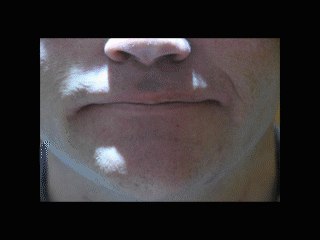Clinical Views
Watch this space for (hopefully) useful advice on dealing with common medical conditions, and possibly some opinion pieces on pertinent clinical topics of the day. Of course if you are unwell and unsure of this advice in anyway, or if you do not fit into the category of patient described under each subject heading it is important that you give us a call and ask for tailored advice.
‘Do not resuscitate order’ summary.
April 8th, 2020 by Dr Wheeler.
We realise that this is a stressful time for everyone in the community – especially those in higher risk categories for coronavirus.
Hopefully very few families will have to deal with serious illness related to the pandemic… but for those that do – it is important that a horrible situation isn’t made worse by misinformation or misunderstanding.
I want to highlight a link to a very well written summary of what ‘Do not resuscitate’ or ‘Do not attempt CPR’ orders are (DNACPR).
Dr Rachel Clarke makes some very important points in the piece – and it may well help some questions or concerns that you or your loved ones might have.
Do not resuscitate link.
If, after reading this, you have questions you want to ask your doctor then please give us a call. We would be very happy to record any wishes you have related to planning for the future, and we might be able to clear up anything you are not sure of.
Please be reassured that DNACPR orders will not be added to anyones notes without discussion, and that they do not affect in any way patient’s access to normal care – up to and including oxygen / ventilation / antibiotics etc.
You raised £452 for Movember!
December 5th, 2014 by Dr Wheeler.Thank you so much to everyone who contributed to my Movember campaign. You raised £452 to help fight prostate cancer. testicular cancer and male depression.
It was itchy and annoying at times – and I had quite a few strange looks over the month – but I think it was worth it.
Thanks again – I really appreciate it.
I have a wee time-lapse of the whole moustache growth below…. a picture for every day of the month.
1 in 8 men get prostate cancer.
October 30th, 2014 by Dr Wheeler.Prostate cancer is a big deal. Many of my patients over the years have had to deal with the diagnosis, including several men around the island of North Uist at this moment in time.
It is very common – especially as men get older, but there remain a lot of unanswered questions about how it should be dealt with:
How do we work out if a man has it? Who needs treated when they are diagnosed? What is the best treatment to use in those who are treated?
We really need to focus more time and money on the problem to help improve cure rates and reduce the burden of the disease in our communities – so i hope you will help support me in raising a bit of money for ‘Movember’.
I am growing a mustache for the month of November to support this charity. It focuses on helping progress various men’s health issues including prostate disease.
Please don’t laugh at my hairy top lip over the next few weeks – and if you want to contribute, follow the link below and make a donation. Sponsorship forms will also be in the surgery.
Here is the link for donations: http://mobro.co/docwheelernorthuist
Go to: http://uk.movember.com/mens-health/prostate-cancer if you want more info on prostate cancer.
If you, or someone you know, has noticed trouble peeing over the past few months or weeks, or need to get up at night a lot to use the loo, or have noticed any blood in their urine, please get in touch with us in the practice so we can get things checked out.
Public health aluminium update.
October 10th, 2011 by Dr Wheeler.Public health have now forwarded me a document outlining their latest information – you can download it here.
How much aluminium is too much?
October 9th, 2011 by Dr Wheeler.I hope my previous post helps reassure you that there is no need to panic about the current situation. That does not however mean that I am particularly happy with how things rest. Aluminium levels in water supplies was not a topic that ever aroused my interest before – but now that it has, I am happy to share some of my thoughts on the matter if anyone is interested.
1) What level of aluminium is acceptable in our water? This is an interesting question. The WHO have set international accepted levels in a document which can be accessed here. These levels have been selected as being the lowest that could be reasonably expected in public water supplies given the question marks over the risk that oral aluminium poses to human health. The level is in fact 0.1mg/litre of water, but 0.2mg/litre is stated as being acceptable in areas with small populations. It seems to be unfortunate but true that the 0.2mg/litre level that is used for Uist is far from ideal – it is instead a pragmatic response to the fact that it is very difficult to keep aluminium levels low in small water treatment works such as ours. As far as I am concerned this makes breaches of the 0.2mg/litre level even more important than would be the case if breaches occurred elsewhere in the UK where the 0.1mg/l limit is generally adhered to.
2) How high have the aluminium levels been? I have seen the figures for this but unfortunately have not been given permission to publish them. I strongly feel that this kind of information should be freely available in the public domain and would have preferred it if the early figures were highlighted at a much earlier stage than they were. I can tell you that in general the levels have consistently been higher than the 0.2mg/L standard since the 19th September – often several times higher. For a few brief periods the levels went between 9-10 times the accepted level for small water treatment plants – which equates to 18-20 times the level that the WHO indicates that we should generally aspire to.
3) What does all this mean? Good question – I wish I knew the answer. As I stated in my previous post – I am reasonably reassured after looking at various papers and editorials on the Camelford disaster that it is very unlikely that we in Uist will see problems in the future from this short term breach of aluminium levels – but I still have underlying concerns.
The WHO document I linked above summarises the findings of 6 different studies – 3 of which pointed towards a link between levels of aluminium above 0.1mg/l in water (note that in Uist 0.2mg/l is accepted) and 3 did not. It summarises these results by saying…
‘On the whole, the positive relationship between aluminium in drinking-water and AD, which was demonstrated in several epidemiological studies, cannot be totally dismissed. However, strong reservations about inferring a causal relationship are warranted in view of the failure of these studies to account for demonstrated confounding factors and for total aluminium intake from all sources. Taken together, the relative risks for AD from exposure to aluminium in drinking-water above 100 µg/litre, as determined in these studies, are low (less than 2.0). But, because the risk estimates are imprecise for a variety of methodological reasons, a population attributable risk cannot be calculated with precision. Such imprecise predictions may, however, be useful in making decisions about the need to control exposures to aluminium in the general population.’
So – not clear cut, but some cause for concern.
Unfortunately for us there has been a much more thorough and as far as I can tell methodologically sound report in recent years which many of the resources on the net reassuring us about aluminium have not taken account of (presumably because it is relatively recent).
This study looked at almost two thousand French people over 15 years, and for the first time was able to factor in total daily water consumption at different aluminium rates. In a nutshell, their conclusion was that aluminium levels over 0.1mg/l were statistically linked with an increased risk of dementia (a relative risk of 2.26 – or just over twice the risk of matched controls with low levels of aluminium in the water supply).
This does not sound great – though like with any research we need to be careful before drawing conclusions.
Putting all this together what kind of questions do we need to be asking Scottish water / public health over the coming weeks?
1) Since we are already forced to adhere to a lower standard of aluminium levels in our water than on the mainland – why were we not informed as soon as the breach of levels became known? (As far as I am aware this would have been within a few days of the 19th September).
2) Why is there not full public disclosure of the levels of aluminium in the water supply even now – several weeks after the event?
3) Given the slow public response to these aluminium levels… how often have aluminium levels breached the 0.2mg/l limit in the past – and were the public ever informed of these breaches?
4) Have there been breaches of the 0.2mg/l limit at the other Uist treatment plant in the past?
5) For the longer term – given the continuing question marks hanging over aluminium levels in our water supply. Is it time to start having public debate about alternatives to using aluminium in our rural water treatment plants? If this is impossible – then at the very least I think we should insist on knowing when the levels go above the 0.2mg/l limit – even transiently.
















